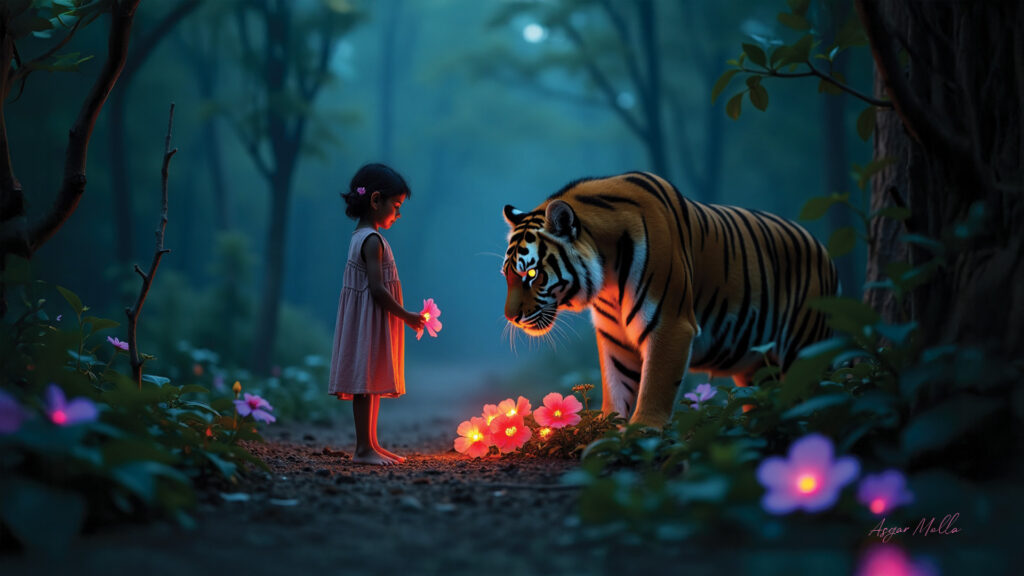In the quiet heart of a forgotten village tucked deep within the Sundarbans, there lived a little girl named Mithi. Her days were colored with the scent of joba ful (hibiscus) and the muddy rhythm of the river that curled like a snake past the bamboo huts.
Every morning, she would pluck a bunch of deep red hibiscus to offer at the tiny village temple, her bare feet brushing over wild grass that often hid gems of wildflowers—some of them hard purple, like the bruises of dusk on the sky.
But that year, something felt different. The villagers whispered of a shadow in the forest. A creature who had not been seen in decades. The Bagh Raja—the Royal Bengal Tiger—had returned.
One evening, Mithi followed a trail of hibiscus petals that weren’t hers. They glowed under the twilight, leading to the edge of the forest. There, nestled between the roots of an old Sundari tree, bloomed a single, large joba ful—its petals an impossible shade of purple.
She stepped closer, spellbound, and suddenly—a deep growl rippled through the air.
From behind the mangroves, two amber eyes emerged.
It was him.

But the tiger did not pounce. Instead, he stood still—his massive body blending with the purple shadows of the forest. In his mouth, he carried a garland of joba ful. He gently dropped it at her feet.
Mithi stood frozen, heart pounding.
The villagers later said she had been touched by the spirit of the Sundarbans, chosen to protect the forest.
And from that day on, no one dared cut trees near the purple trail, where the girl and the tiger once met—forever bound by the blood-red bloom of joba ful, and the secret language of the wild.

Best Fails of The Week 😂 Funniest Fails Compilation 2025 | Viral Funny Videos & Memes
Everyone loves a good laugh, and nothing beats watching the Best Fails of the Week. From hilarious accidents to prank

Best Funny Fails Compilation 2025 😂 Try Not to Laugh Moments from Around the World
Introduction If you’re looking for a good laugh, you’ve come to the right place! Our latest Funny Fails Compilation 2025

Sundarban Crab Farming – From Our Pond to Market | Asgar Molla’s Success Story
Introduction – Life by the Water in the Sundarbans In the heart of the Sundarbans, where mangroves guard the coastline
